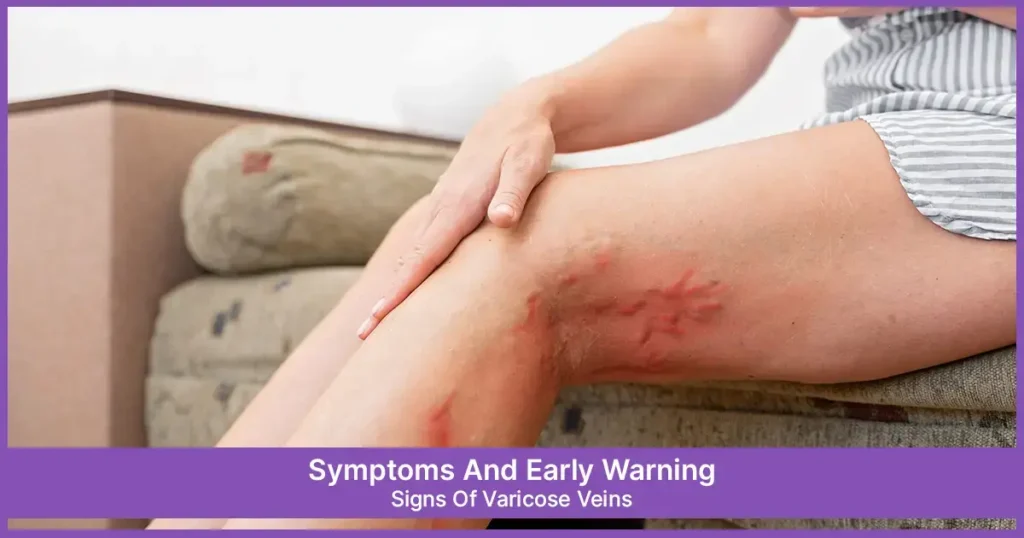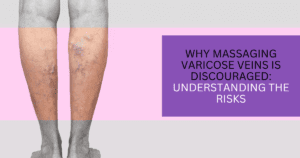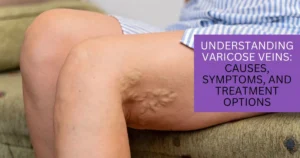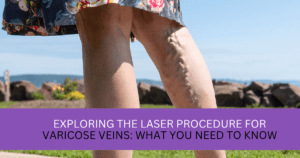Do you feel heavy, achy, and swollen legs? If this is the case, your legs may have developed varicose veins. With approximately 30% of U.S. adults living with Swollen veins, this condition is quite common, particularly among females. These twisted and bulging veins are beyond an aesthetic issue. They may raise concerns about circulatory problems and, in rare cases, can trigger complications like blood clots and ulcers. This article helps you understand the symptoms and primary warning signs of varicose veins to guide individuals to seek timely care and prevent the condition from worsening.
Understand Varicose Veins
Varicose veins are large and dilated veins that develop when blood moves backward, pooling in the veins and causing them to bulge. The veins may appear dark red, purple, or blue. They may grow above the skin surface. The veins valves that help blood circulate toward the heart weaken or become damaged, causing enlarged veins.
Early warning signs and symptoms
Varicose veins are largely associated with aging, pregnancy, prolonged standing, obesity, and a genetic history of the condition. Timely identification of the early signs of Swollen veins is mandatory to prevent skin ulcers, blood clots, or DVT. Before enlarged veins develop, you may notice symptoms hinting at vein trouble.
Achy legs
After physical activity or walking, you may feel an ache in your legs. Individuals dealing with cramping and achy legs after physical activity are more susceptible to varicose veins.
Swollen feet
If your feet and ankles regularly swell after staying in the same position for long, this signals that you’re at high risk of dilated veins.
Dark Spots on lower legs
If you are anxious about developing Swollen veins, check your lower legs for red spots. These spots can be an early sign that blood vessels in your limbs have weakened.
Shiny legs
Before the swelling appears, some people spot an unnatural shine or pigmentation on the surface of the leg. Another prominent sign you may also notice is that your legs itch or feel as if they are peeling.
Skin Discoloration and Changes
As varicose veins worsen, the affected area may experience visible changes. The brownish or reddish discoloration is known as stasis dermatitis. The accumulation of blood and other waste products in the skin leads to inflammation and discoloration. If the situation worsens, skin may develop a leathery texture.
Chronic varicose veins can develop ulcers or small open sores on the skin, particularly near the ankles. These ulcers cause pain and hardly heal, accentuating the risk of infection.
Explore Risk Factors
Varicose veins can develop at any age. Different factors contribute to the likelihood of enlarged veins. Some of the potential risk factors include:
- Genetic History – If you have a genetic background with a history of vascular problems, then this increases the risk of developing them.
- Prolonged Sitting or Standing – Prolonged stay in one position is troublesome. This requires your veins to work harder to supply blood back to your heart, developing varicose veins.
- Being overweight – Carrying extra pounds increases the risk of developing enlarged veins. This extra burden pressurizes your veins, increasing the likelihood of the occurrence of dilated veins.
- Pregnancy – Pregnancy is another situation where there is added pressure on your veins in your limbs. Many women undergo varicose veins during pregnancy, but nothing to worry about. They usually fade away within 3 to 12 months after delivery.
- Aging – As your age increases, so too does your likelihood of developing Dilated veins. The aging process may weaken the veins.
- Gender – Women experience more vascular problems than men. More general causes include hormonal changes that occur during pregnancy and menopause.
A Snapshot of Varicose Veins Treatment
Did you notice any of the symptoms listed in yourself? It’s time to consult a vascular doctor. Although varicose veins may not demand urgent intervention, identifying the signs early can help control further complications. A professional vein clinic can help you determine the most needed varicose vein treatment options. These may include lifestyle modifications, compression stockings, or non-invasive procedures. For visual examination, vein doctors recommend diagnostic tests like an ultrasound to view the blood flow. Once the Swollen veins are diagnosed, you can take steps to stop their formation.
- The non-surgical treatments for varicose veins begin with lifestyle modifications, such as losing weight if overweight. Elevating your legs helps smooth blood flow. Your vein expert may also recommend wearing compression stockings. Medical procedures are also available to address the enlarged veins.
- Timely identification of dilated veins can lead to simpler treatments. In some cases, if varicose veins are left untreated, they can cause pain and other symptoms that limit your daily life. The best way is to go for personalized treatment options.
Adopting a healthy lifestyle and avoiding prolonged standing or sitting are the key preventive measures. If you still experience Swollen veins, there are various advanced and trusted treatment options available to address symptoms. Don’t delay or settle for less. Timely decisions further help to scale down the risk of complications. For more information about varicose vein screening and treatment, visit Chicago Vein Centers by booking an appointment today.




